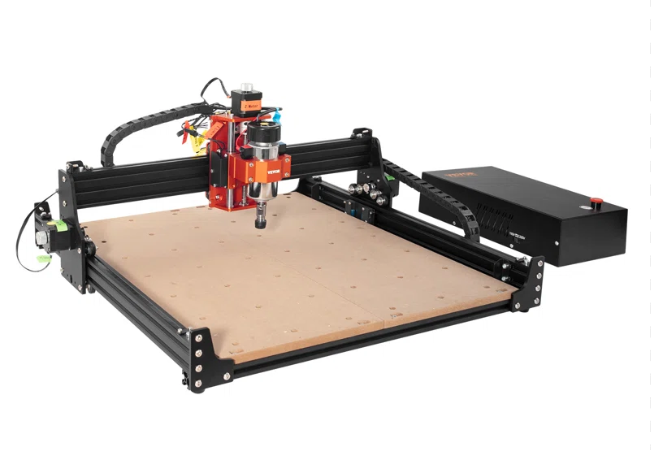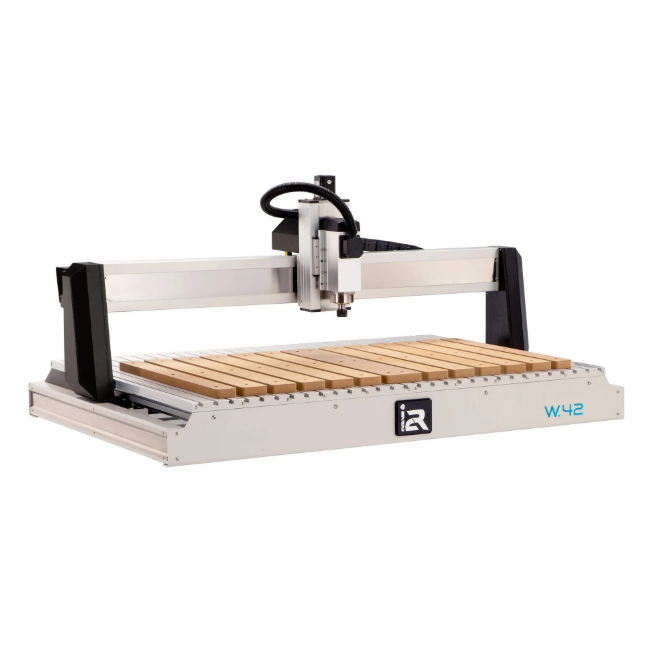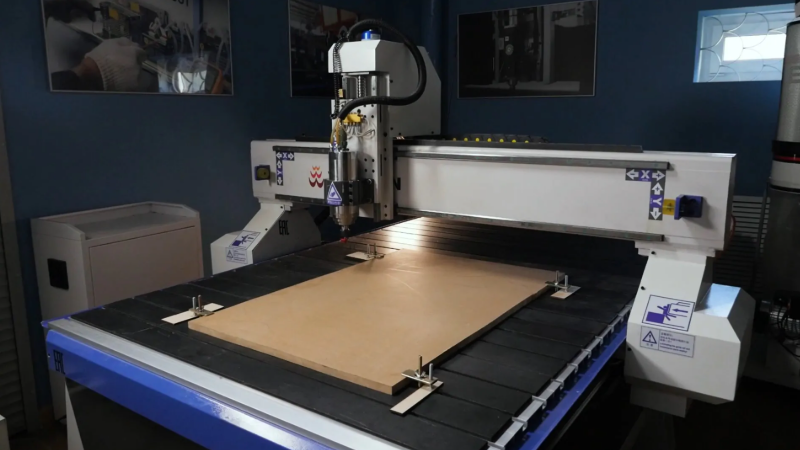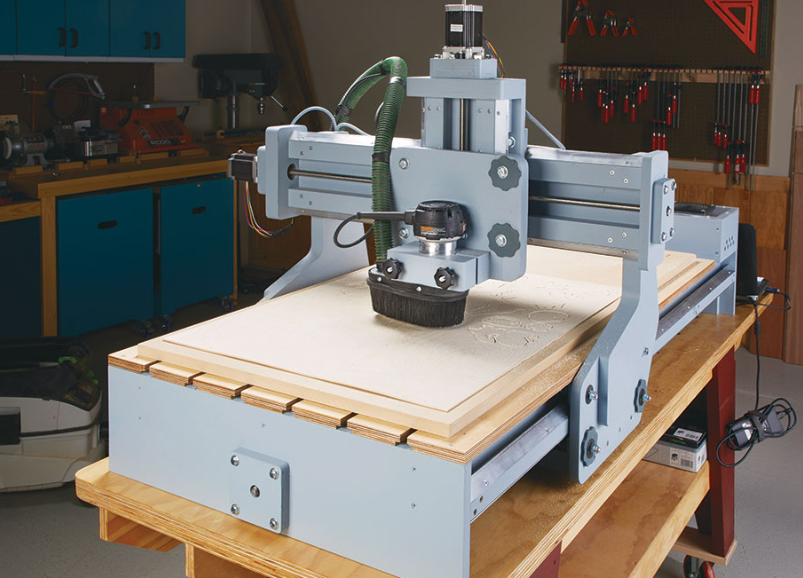CNC wood router machines are sophisticated computer-controlled cutting systems specifically designed for woodworking applications, capable of transforming digital designs into precise physical components through subtractive manufacturing processes. These machines utilize high-speed rotating cutting tools that move across three or more axes, distinguishing themselves from metal-cutting CNC equipment by prioritizing rapid material removal rates over extreme cutting forces. Typical spindle speeds range between 8,000 to 24,000 RPM, enabling clean cuts in various wood materials while specialized vacuum tables or mechanical clamping systems securely hold workpieces during operation. The machines incorporate efficient dust collection ports to maintain optimal working conditions, with configurations spanning from compact desktop units handling 600×900mm work areas to industrial-scale gantry systems capable of processing full 4×8 foot sheets or larger. Modern CNC wood routers represent the convergence of traditional woodworking craftsmanship with advanced digital fabrication technology, offering unprecedented precision and repeatability in wood component production.
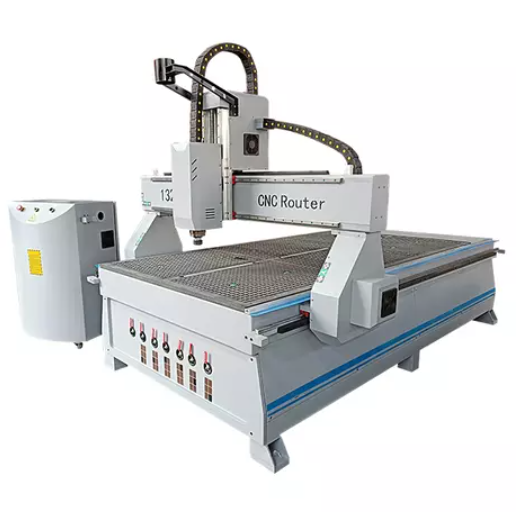 The historical development of CNC wood routers mirrors broader technological advancements in both computing and woodworking industries. Early numerical control systems adapted from metalworking machinery first appeared in furniture factories during the 1970s, requiring operators to program using cumbersome punch card systems. The 1990s marked a significant evolution with the integration of PC-based controls and CAD/CAM software, dramatically reducing programming complexity and opening woodworking to digital design possibilities. Contemporary machines now feature advanced servo systems achieving remarkable positioning accuracy of ±0.025mm, coupled with high-frequency spindles that maintain consistent torque across variable speed ranges. The post-2010 proliferation of affordable stepper motor systems revolutionized small-scale CNC routing accessibility, bringing digital fabrication capabilities to custom woodworking shops and small manufacturers. Today’s industrial-grade models incorporate sophisticated features including automatic tool changers with 6-24 tool capacity, laser positioning systems for precise workpiece alignment, and real-time adaptive feed rate control that optimizes cutting parameters during operation.
The historical development of CNC wood routers mirrors broader technological advancements in both computing and woodworking industries. Early numerical control systems adapted from metalworking machinery first appeared in furniture factories during the 1970s, requiring operators to program using cumbersome punch card systems. The 1990s marked a significant evolution with the integration of PC-based controls and CAD/CAM software, dramatically reducing programming complexity and opening woodworking to digital design possibilities. Contemporary machines now feature advanced servo systems achieving remarkable positioning accuracy of ±0.025mm, coupled with high-frequency spindles that maintain consistent torque across variable speed ranges. The post-2010 proliferation of affordable stepper motor systems revolutionized small-scale CNC routing accessibility, bringing digital fabrication capabilities to custom woodworking shops and small manufacturers. Today’s industrial-grade models incorporate sophisticated features including automatic tool changers with 6-24 tool capacity, laser positioning systems for precise workpiece alignment, and real-time adaptive feed rate control that optimizes cutting parameters during operation.
CNC wood routers comprise several critical mechanical subsystems that work in concert to deliver precise cutting performance. The structural framework typically consists of welded steel or aluminum gantry constructions engineered for vibration dampening and long-term stability, with linear guide systems (either round rails or profile rails) ensuring smooth axis movement. Motion control is achieved through stepper or servo motors (commonly NEMA 23/34 sizes) paired with digital drives featuring microstepping capabilities for enhanced resolution, while limit switches and homing sensors provide reliable machine referencing. The cutting system centers around air-cooled or liquid-cooled spindles ranging from 1.5-15kW in power, utilizing ER collet chucks that accommodate tool shanks from 1/4″ to 1/2″ diameter. Workholding solutions vary from vacuum zones with adjustable partitions for sheet goods to T-slot tables for mechanical clamping of solid wood stock, with some advanced systems incorporating pinch roller mechanisms for continuous feed operations. This comprehensive mechanical architecture enables the machines to handle everything from delicate engraving work to heavy-duty panel processing with equal precision.
Operation of CNC wood routers relies on integrated software ecosystems that bridge digital design to physical production. Machine control software such as Mach3, LinuxCNC, or proprietary controllers interprets G-code instructions, while design software packages like Vectric Aspire, Fusion 360, or RhinoCAM facilitate the creation of complex woodworking projects. The toolpath strategies employed include profile cuts with selectable climb or conventional milling options, pocket clearing using raster or offset patterns, detailed 3D contouring for relief carvings, and precision drill cycles for hardware mounting holes. Specialized post-processors convert CAD models into machine-specific G-code, accounting for unique tool geometries and material properties, with advanced systems incorporating simulation modules to detect potential collisions before actual machining begins. This software integration allows woodworkers to transition seamlessly from creative concept to finished product while maintaining tight tolerances and efficient material usage.
The performance of CNC wood routers heavily depends on proper tool selection tailored to specific wood types and applications. Cutting tools come in various materials including solid carbide for hardwoods and abrasive composites, carbide-tipped options for cost-effective softwood processing, and diamond-coated variants for laminated materials. Geometric variations address different cutting needs: straight bits for profile cutting, compression bits producing clean edges on both sides of plywood, V-carving bits for decorative engraving, and ball nose bits for detailed 3D surfacing work. Operating parameters vary significantly by material, with softwoods typically processed at 8-15 m/min feed rates and 6-12mm depth of cut, while hardwoods require more conservative 5-10 m/min feed rates at 3-8mm depth. Composite materials demand even more careful handling at 4-8 m/min with shallower 2-5mm cuts to prevent delamination. This precise tooling knowledge enables operators to maximize both cutting quality and tool life across diverse projects.
Industrial applications for CNC wood routers span a remarkable range of production scenarios in the woodworking industry. Furniture manufacturing utilizes these machines for cabinet door machining with raised panel details, custom joinery cutting including dovetails and box joints, and precision drilling for hardware installation. Architectural woodworking applications include production of decorative moldings and trim profiles, intricate wall panel carvings, and structural timber framing connections. The signage and display industry relies on CNC routers for dimensional letter carving, backlit acrylic-wood composite signs, and retail display fixtures. Musical instrument makers employ the technology for guitar body contouring, piano action parts machining, and woodwind instrument components. Artistic applications push the machines’ capabilities further in creating bas-relief sculptures and complex intarsia inlay work. This versatility makes CNC wood routers indispensable tools in modern wood product manufacturing, capable of handling both mass production and one-off custom fabrication with equal proficiency.
The continued evolution of CNC wood router technology focuses on enhancing precision, expanding capabilities, and improving user experience. Recent advancements include improved dust extraction systems that capture up to 99% of particulate matter, protecting both equipment and operators. Tool recognition systems automatically identify installed cutters and load appropriate cutting parameters, reducing setup errors. Some machines now incorporate on-board material scanning that detects workpiece inconsistencies and adjusts toolpaths accordingly. Software developments have introduced more intuitive interfaces with touchscreen controls and augmented reality overlays that guide machine operation. The integration of IoT capabilities enables remote monitoring of machine status and predictive maintenance scheduling. These innovations collectively work to make CNC wood routing more accessible to new users while providing experienced operators with greater control and efficiency in their woodworking projects.
Safety systems in modern CNC wood routers have evolved to address the unique hazards of high-speed wood cutting operations. Current machines feature emergency stop circuits that halt all motion within milliseconds, spindle brakes that prevent coasting after shutdown, and thermal protection for both electronics and cutting tools. Physical guarding with interlock switches prevents access to moving components during operation, while laser projection systems create visible work envelopes as safety boundaries. Advanced models incorporate real-time vibration monitoring that can detect tool breakage or excessive load conditions, automatically pausing operations when anomalies occur. These comprehensive safety measures protect operators while also safeguarding the substantial investment represented by industrial CNC woodworking equipment.
The economic considerations of CNC wood router implementation involve balancing capital costs against production benefits. Entry-level machines suitable for small shops start around $5,000, while industrial-scale systems with automatic tool changers and advanced features can exceed $150,000. Operating costs include spindle maintenance (bearing replacement every 8,000-10,000 hours), cutting tool expenses, and regular lubrication of linear components. However, the productivity gains often justify these investments, with CNC routers typically achieving 3-5 times the output of manual methods while reducing material waste through optimized nesting. Return on investment frequently falls in the 12-24 month range for production shops, with the added benefit of enabling work that would be impractical or impossible with conventional woodworking tools.
Looking forward, CNC wood router technology continues to evolve in several promising directions. Hybrid machines combining additive and subtractive capabilities are emerging, allowing for innovative wood-composite fabrication techniques. Improved scanning systems enable reverse engineering of existing pieces for reproduction or modification. Artificial intelligence applications are beginning to appear in toolpath optimization and defect detection. These advancements promise to further expand the creative and production possibilities for woodworkers, ensuring CNC routers remain at the forefront of digital fabrication technology for wood products. The technology’s ongoing development reflects the woodworking industry’s broader digital transformation while maintaining the craft’s essential connection to material and technique.

